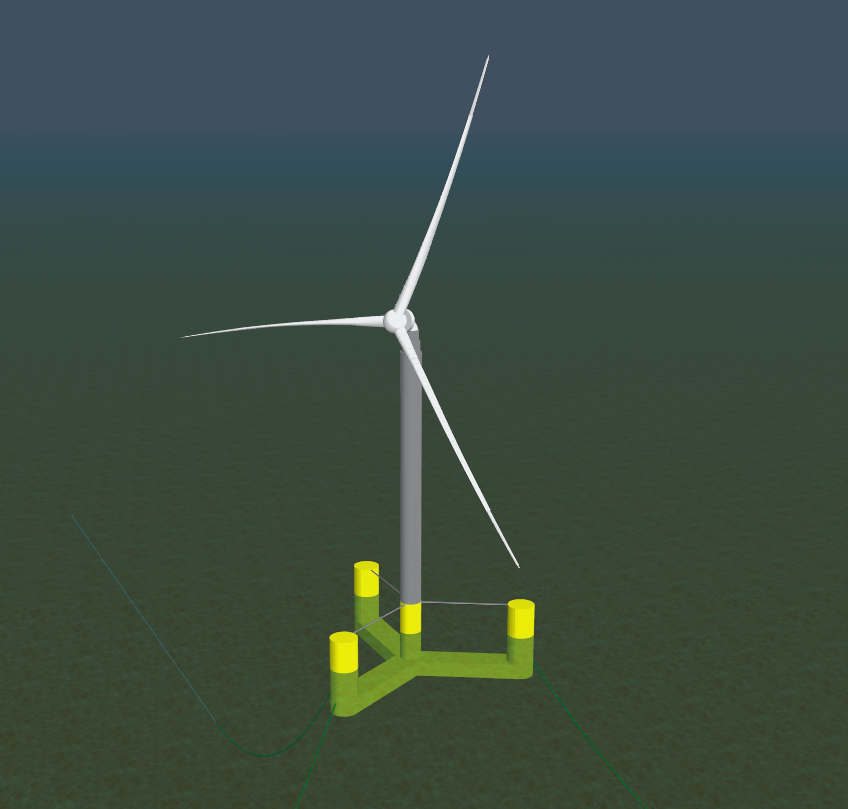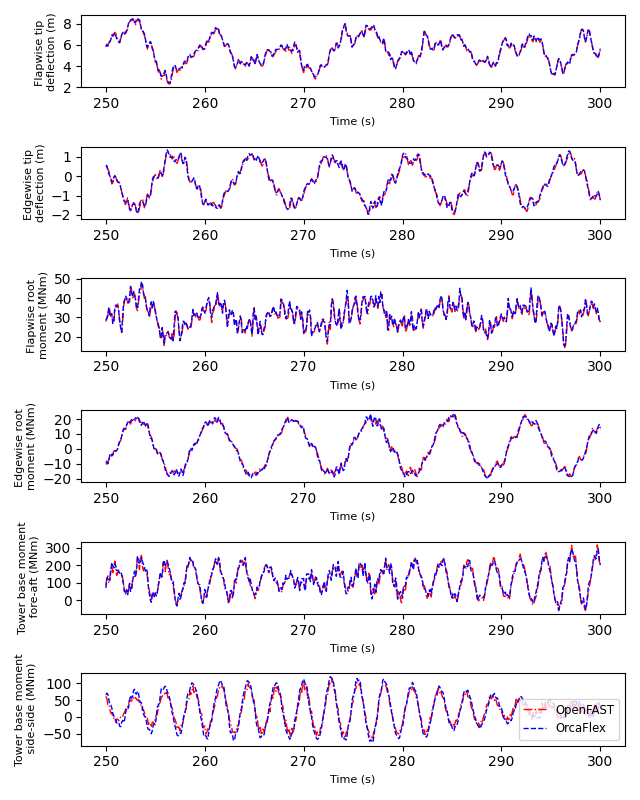We have recently made some updates to the wind turbine resources available on our website.
Firstly, one of our most popular OrcaFlex modelling examples – K03 15MW semi-sub FOWT – has been revised to reflect the latest IEA 15MW reference wind turbine (RWT) design: version 1.1.3. The rotor, nacelle and tower updates have been made possible by the design/model information made available through the IEA-15-240-RWT GitHub repository.
Modelling of the semi-submersible foundation has again been supported by OrcaWave, which we have used to perform a diffraction analysis for the UMaine VolturnUS-S semi-submersible. The platform design basis is documented here and the same report details the mooring specification considered for this example.
As with all of our modelling examples, the accompanying description PDF document provides a summary of the important details, including some discussion about the model build and some important results of interest.
Unsteady aerodynamics (UA)
Since introducing the turbine object, back in 2018, we have been continually working to enhance its capability and the K03 model now supports the latest functionality.
More recently, as part of our OrcaFlex 11.3 release, we introduced two unsteady aerodynamic models: González and Minnema Pierce. Both models are able to account for a range of important unsteady flow phenomena: attached flow, trailing-edge flow separation, dynamic stall, and flow reattachment. These phenomena can be characterised by rapid change, delay, and hysteresis of the aerodynamic load.
The K03 example includes the model input data and settings required to implement either of the UA models. Here, we have chosen to implement the González model to remain consistent with the approach considered as part of our validation study (discussed below).
Further details about setting up a turbine model, to capture UA effects, can be found in the example description PDF and through the Turbines & OrcaWave new features webinar, delivered in line with the release of OrcaFlex version 11.3.
Controller modelling
The K03 example implements the latest version of NREL’s Reference Open Source Controller (ROSCO, v2.6.0), available at the time of writing. Included amongst the K03 example files is the 64-bit version of the ROSCO DLL (libdiscon.dll), downloaded from the ROSCO GitHub repository. Also included is a copy of our controller wrapper, which is available from https://github.com/Orcina-Ltd/turbine-controllers.
ROSCO is configured to call a parameter input file (DISCON-UMaineSemi.IN), listing the required controller parameters, along with a rotor performance file (Cp_Ct_Cq.IEA15MW.txt); both of which have been downloaded from the IEA-15-240-RWT GitHub repository.
Our K02 10MW fixed-bottom OWT example model of the IEA 10MW RWT has also been updated to run with ROSCO 2.6.0, with the necessary parameter input and rotor performance files coming from the corresponding IEA-10.0-198-RWT GitHub repository.
Validation study
Lastly, to support the K03 example development, we have carried out a validation study which compares the aeroelastic response of the 15MW turbine, calculated by OrcaFlex, against that predicted by OpenFAST running BeamDyn.
A report summarising a full comparison of results can be downloaded from the validation page of our website. The study considers the structural dynamics of the turbine blade oscillating freely under gravity and the aeroelastic response of the rotor-nacelle assembly (RNA) and tower to steady, stepped, skewed & turbulent wind.
Overall, we have found the results to be in very close agreement, supporting both the validity of the updated OrcaFlex RWT model and consistency across the two aeroelastic codes. Below are some select results from the validation report.
We hope that the above resources will be helpful to anyone modelling wind turbines in OrcaFlex. We always welcome any questions or feedback, so please do contact us for any further enquiries.



